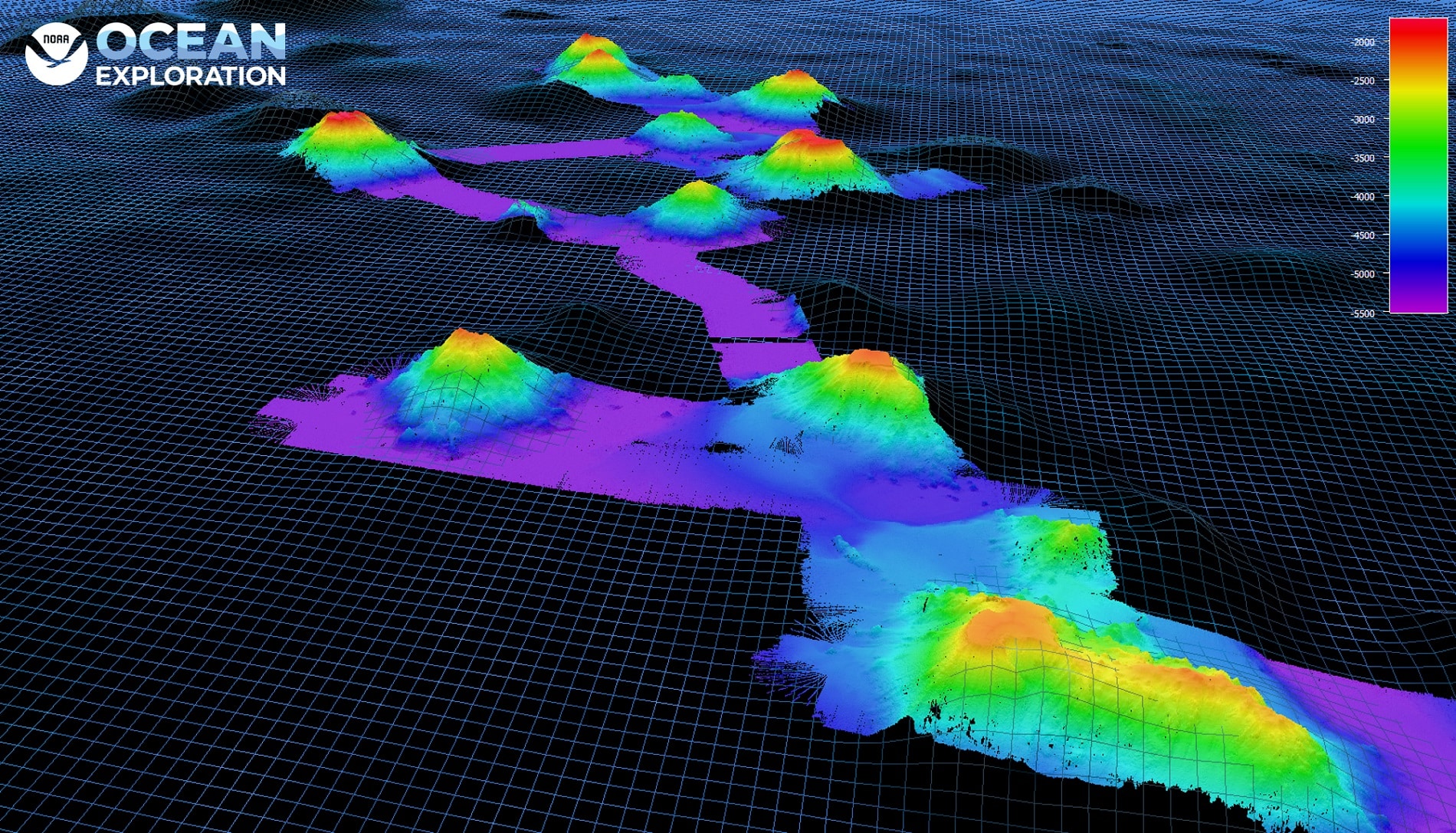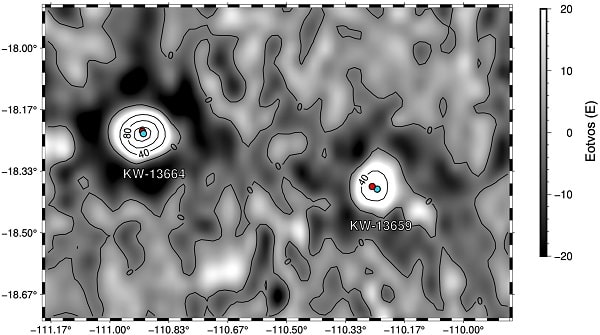
Discover 19,000 underwater volcanoes with high-resolution radar satellites
They went to look for volcanoes from space. A team of scientists set out to use high-resolution radar satellites to map underwater maps of Earth’s oceans. They discovered more than 19,000 volcanoes during this study.
The oceans… while occupying more than 70% of the Earth’s surface, are still poorly understood, and the underwater topology is far from perfectly mapped. Until now, sonar has mainly been used to map the sea floor. This technology consists of producing sound waves to detect obstacles in the water. However, despite scientists’ best efforts, it is estimated that only a quarter of the sea floor has been mapped in this way. Countless terrains therefore still lurk underwater, occasionally running into unlucky submarines.
The scientists behind the discovery of these 19,000 new volcanoes used a different technique. In fact, radar satellites that measure the height of the oceans are also able to give us information about the sea floor. To do this, scientists note subtle differences on the surface of parts of the oceans located above a large relief. In 2011, the first census using this technique was already carried out. It has made it possible to discover about 24,000 “seamounts”. Seamounts are seamounts formed by volcanic activity.
Wear a powerful climate message and breathe deeply the scent of awareness emanating from those who dare to read your message to the end. 🌍
To conduct this new study, the scientists used high-resolution radar satellites, making it possible to add 19,000 seamounts to the fishing table. With the greater resolution, scientists believe they can estimate the height of small underwater volcanoes with an accuracy of about 370 metres. In the sum of the peaks identified by these two “surveys”, 27,000 seamounts have yet to be mapped by sonar. ” It is absolutely amazing David Sandwell, a marine geophysicist at the Scripps Institution of Oceanography who was involved in the study, said,
in a scientific article.
Understanding submarine summits to understand climate change
The researchers extracted data from several satellites, including the European Space Agency’s (ESA) CryoSat-2. They found that they were able to detect seamounts 1,100 meters high, which is the lower limit of what constitutes a “seamount,” according to the article. science. From their analysis they extracted a new “catalog” listing these inscriptions. It is therefore the most comprehensive document ever created on the subject. It was published April 6 in the journal Earth and space sciences.

Two seamounts from the Kim-Wessel catalog before and after positioning (landmarks of 20 Eotvos). The light blue dots indicate the seamount’s original location. The red dots are the new centers selected according to the maximum value of the vertical gravity gradient.
This information is valuable to scientists, because the existence of this terrain says much more than we might think at first glance. In fact, studying these submarine “volcanoes” provides a better understanding of ocean currents and plate tectonics. It also gives us clues about climate change: ” They are movers that help control the large-scale ocean flows responsible for sequestering large amounts of heat and carbon dioxide John Lowell, chief hydrographer for the National Geospatial-Intelligence Agency (NGA), which manages the US military’s satellite mapping efforts, told the Journal. science. ” The better we understand what the sea floor looks like, the better we can prepare [au changement climatique] “.
Incredible oases of life for many species, these mountains are also fascinating from a biological point of view. In other words, many scholars of all stripes should go through this catalog. ” There are a bunch of interesting things that happen when you have terrain L explains
science Brian Arbeck, a physicist oceanographer at the University of Michigan in Ann Arbor, who was not involved in the study.
source : Earth and space sciences

“Incurable web evangelist. Hipster-friendly gamer. Award-winning entrepreneur. Falls down a lot.”
